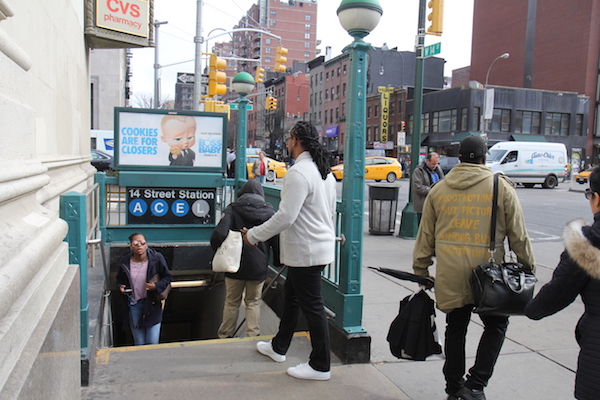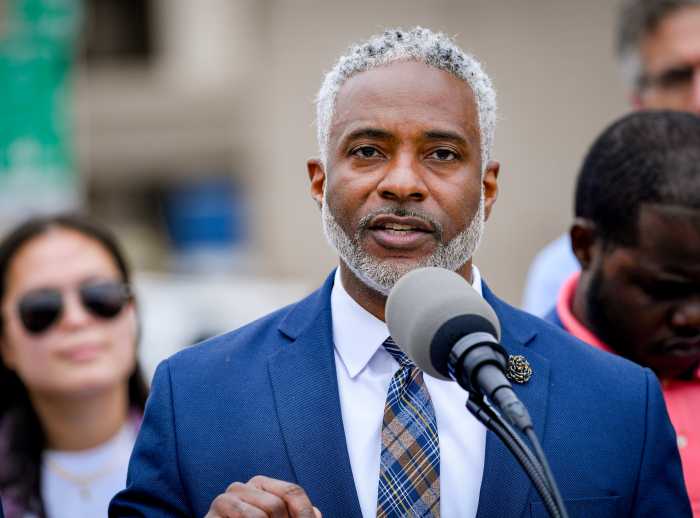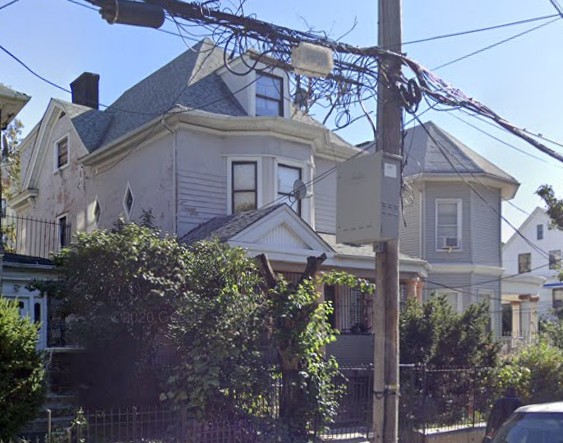
YEA: I am a member of Transportation Alternatives (TransAlt; transalt.org) who lives on 14th St., between Seventh and Eighth Aves.
I stand for a more people-friendly 14th St., and for a more efficient, healthy, and equitable use of its right of way, prioritizing walking, cycling, and clean public transportation. This is, in my opinion, the rational way to approach the challenges of the coming shutdown of L train service along 14th St. and between Manhattan and Brooklyn.
I know from numerous conversations that I am far from alone in my community in supporting people-oriented change on 14th St., and so was disappointed by the comments from the president of the Council of Chelsea Block Associations made in a recent Chelsea Now article [“West Side Workshop Troubleshoots L Train Shutdown,” March 2, 2017]. Mr. Bill Borock criticized Transportation Alternatives for rallying supporters of a 14th St. “PeopleWay” dedicated to walking, bus transit, and cycling, accusing TransAlt of exercising “undue influence” just because they advocacy group made use of the right to express their views.
I strongly object to this language, which leaves me with the impression that the CCBA is currently acting as a special interest lobbying group defending only the views of the most privileged fraction of the community. The almost idyllic conditions on the quiet neighborhood blocks are, after all, possible only because 14th St. and nearby avenues bear the brunt of the traffic and its nuisances.
I support and commend TransAlt for expressing what so many of us think and want. I am grateful to the group for raising awareness of these issues, and for helping mobilize us to attend these workshops.
Nevertheless, I do understand the concerns of critics that closing 14th St. might push cars and trucks onto surrounding streets. I, too, love these quiet side streets and do not want to see them overrun with the toxic traffic, emissions and noise that those of us who live on 14th St. deal with every day.
However, if we don’t take bold action to keep the 225,000 commuters who currently use the L train between Brooklyn and 14th St. moving during the shutdown, the side streets will not be spared the consequences of gridlock.
At the local level, closing 14th St. to most private vehicular traffic is inevitable because the entire width of the street will barely accommodate the additional buses, biking and walking that the crosstown connections will require during the shutdown.
At the same time, through traffic should be restricted on side streets, by regulation, enforcement and redesigns to ensure slow speeds. These measures could extend all the way to Eight St. and 23rd St. Publicizing the closure to through traffic of the entire area will discourage driving. This is a well-documented phenomenon: A large part of the traffic demand simply disappears when roads are closed, as commuters seek out alternatives.
On 14th St., the motor vehicle ban would, of course, have to exempt police and emergency vehicles, along with transportation for the disabled and elderly, and allow access to pre-existing garages. Trucks could make deliveries during off-peak hours, and officials could consider a daytime cycle rickshaw delivery service.
Borough- and citywide measures should include tolling the bridges into Manhattan that are currently free, reducing on-street parking for non residents, raising parking meters and garages fees while banning new garage construction, improving sidewalks and crosswalk signals, expanding the protected bikeway network, and adding more, better-enforced, dedicated bus lanes around the city.
All of us living and working in Chelsea and the West Village should unite to promote and demand the reduction of car traffic in the area. We will all benefit.
Luc Nadal is Technical Director for Urban Development at the Institute for Transportation and Development Policy (itdp.org).
NAY: The traffic diversion plans of Transportation Alternatives (TransAlt) and the Regional Planning Association (RPA) leave much to be desired. These organizations support a “PeopleWay” along 14th St., which would divert traffic onto residential side streets and ignore the consequences and impact to our fragile neighborhoods.
The issue of how to transport L train riders across the Williamsburg Bridge and back into the underground transit system is not the same issue as permanently re-designing 14th St. The L train shutdown is temporary, but a radical re-design of 14th St. is not. By pushing the agenda of the PeopleWay, both TransAlt and RPA completely lose sight of the negative consequences associated with such a change on our residential streets.
First, 14th St. is a major thoroughfare for surface transportation. It is designed to withstand a heavy load of traffic such as tractor-trailers, buses and constant usage by vehicles (private cars, Uber, delivery trucks, etc.). If traffic were diverted off this route, there would be drastic consequences. Along residential streets, historic older buildings would experience cracked foundations, underground utilities such as the 20-inch gas main under 15th St. would be stressed and could crack, and deliveries could be extended well into evening or early morning hours. The worst outcome is that emergency vehicles could be trapped, and unable to respond in a timely manner.
Second, without proper planning, traffic that is diverted because of a permanent PeopleWay would create unsafe road conditions and threaten the safety of people walking on narrow sidewalks. It would also create extreme noise and air pollution for local residents.
There has not been one proposal that explains where the traffic is going to go.
At a recent [Feb. 23] MTA/DOT workshop, two of the three plans presented were traffic diversion plans and thus, unworkable. There are options, however, by diverting commuters to re-entering the transit system closer to the bridge, and to specific lines, to which many L train riders transfer to.
To provide perspective, the Manhattan riders of the L train are only 1.6 percent of total Manhattan average weekday ridership (based on MTA’s 2015 figures). Based on other studies, only three percent of such riders actually get out at 14th St. stops. The number of residents, businesses, schools, shops and others affected would easily be much larger than the number of commuters affected. In addition, the west side of Chelsea and the West Village no longer have a full-service hospital. How much stress needs to be expended when trying to get medical care?
Further, 85 percent of commuters affected are expected to use alternative subway lines, like the M, J, or Z. Buses are expected to handle about 10 percent, and bikes about 5 percent. Why are bikes so prominently being considered in plans? They don’t serve the 95 percent, yet they will displace traffic and cause huge problems if they are given a lane across 14th St. as TransAlt proposes.
Buses can carry people over the East River to different stops in order to reconnect with the subway system, like using Houston (a three-lane street) to West Fourth St. for the Sixth and Eighth Ave. subway lines, which also provides access to express trains.
We understand something must be done to help the affected commuters, but we do not support lobbying groups that are exerting undue and out-of-proportion influence to push their permanent traffic diverting agendas onto our local neighborhoods.
Our residents deserve and demand better planning so that our neighborhoods are not negatively impacted by any traffic diversions from 14th St.
Members of the 14th Street L-Line Closing Extended Task Force – comprised of The Council of Chelsea Block Associations [north of 14th Street], The Flatiron Alliance, The Lower Chelsea Alliance, The Union Square Community Coalition, and Block Associations South of 14th Street — authored this statement.






























